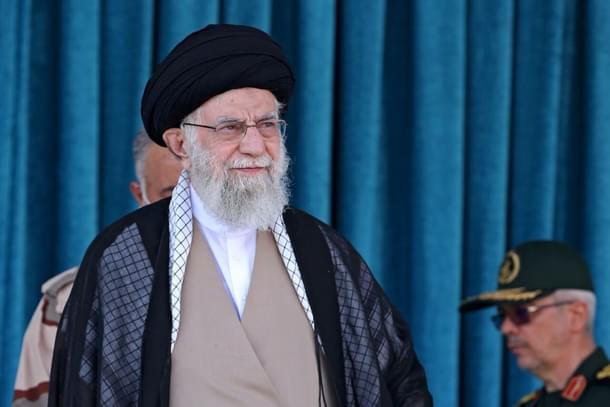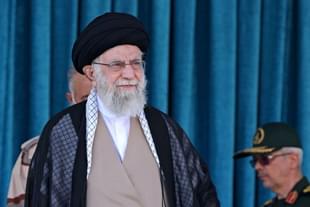World
Ayatollah Khamenei Blames U.S And 'Zionist' Forces As Anti-Hijab Protests Rage Across Iran, Condemns Burning Of Koran And Mosques By Protestors
Swarajya Staff
Oct 04, 2022, 10:24 AM | Updated 10:24 AM IST
Save & read from anywhere!
Bookmark stories for easy access on any device or the Swarajya app.


Iran’s supreme leader, Ayatollah Ali Khamenei, has blamed the United States and Israel for orchestrating protests that have erupted across the country for more than two weeks over the custodial death of a 22-year-old Kurdish woman, accusing the countries of trying to stop Iran’s “progress”.
Speaking at the graduation ceremony of cadets at a police university in Tehran, the Supreme Leader said that while the "chaos was planned by the United State and the Zionist regime, their mercenaries and some betraying Iranians abroad helped them."
Khamenei also insinuated that "media affiliated to the American capitalism and their mercenaries, like some governments in the region and Saudi Arabia" have a role in protests
"We were heartbroken, too. But the reaction to this incident, while no investigation has been done and nothing has been certain, should not have been this that some people come and make the streets insecure, cause the people to feel unsafe, harm the security, burn the Quran, remove the hijab of a woman, burn mosques and hussainiyahs, and arson banks and people’s cars," he added.
Khamenei claimed that the unrest was an attempt to stop the country from the advances he said it had made despite US sanctions imposed since 2018.
"The American’s sympathy for the death of a girl is fake and they are happy in fact for gaining a pretext to make chaos" Khamenei alleged.
The death of Mahsa Amini, a young Kurdish woman who hails from from the western city of Saqez, has sparked a chain of anti-government protests in many cities all over Iran.
Amini was visiting Tehran with her family when she was stopped on Sept. 13 by the Guidance Patrol (“Gasht-e-Ashab”), a morality police unit that enforces Iran’s obligatory Islamic dress codes, on charges of being “immodestly dressed”. According to the law, women should cover all their hair with a headscarf and wear clothes that cover most of their skin.
Hijabs became compulsory in public for Iranian women and girls over the age of 9 after the 1979 Islamic Revolution, when monarchy was replaced with an authoritarian Islamist theocracy. The morality police in its current form was created 15 years ago.
In July, the Iranian president ordered stricter enforcement of hijab and chastity laws for women, introducing a new list of restrictions on how women can dress.





